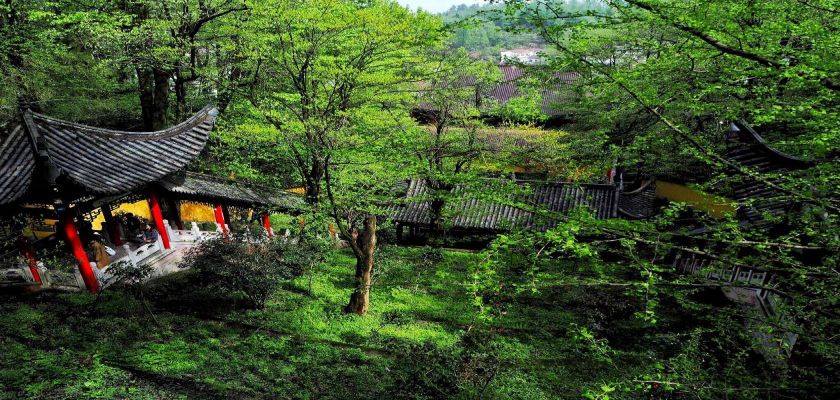Chinese Name: 九华山 Pronunciation: jiǔ huá shān
Suggested Visiting Time: 1-2 Days
Height: 1,342 meters (4,402 feet)
Mountain Tourist Area: 120 square kilometers
Address: Jiuhua Town, Qingyang County, Chizhou Prefecture, Anhui Province
| Contents | Peak Season (January 16th – November 14th) |
Low Season (November 15th – January 15th) |
| Adult | 160 yuan | 140 yuan |
| Child with Chinese ID (over 6 years old but under 18 years old) |
80 yuan | 70 yuan |
| Senior with Chinese ID (over 60 years old but under 65 years old) |
80 yuan | 70 yuan |
| Cable Car | Entrance Fee | |
| Peak Season | Low Season | |
| Longevity Palace | January 16th – November 14th 100 yuan (round-trip); 55 yuan (single-trip) |
November 15th – January 15th 80 yuan (round-trip); 45 yuan (single-trip) |
| Heavenly Terrace | January 16th – November 14th 160 yuan (round-trip); 85 yuan (single-trip) |
November 15th – January 15th 120 yuan (round-trip); 65 yuan (single-trip) |
| Flower Terrace | March 1st – November 30th 160 yuan (round-trip); 90 yuan (single-trip) |
December 1st – the end of February 120 yuan (round-trip); 70 yuan (single-trip) |
| Contents | Time | |
| Mount Jiuhua Scenic Area | All Day | |
| Cable Car | ||
| Longevity Palace, Heavenly Terrace | 07:00 - 17:00 | |
| Flower Terrace | January 16th - November 14th 07:30 - 17:30 |
November 15th - January 15th 08:00 - 17:00 |
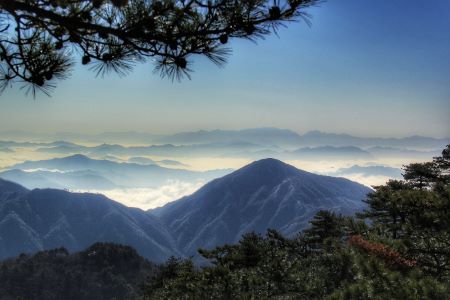
Located in Chizhou City, Anhui Province, Mount Jiuhua is a national scenic area featuring natural scenery and Buddhist culture. Mount Jiuhua is called one of the four great Buddhist mountains in China. Besides, it is also a 5A-level tourist attraction, a natural and cultural heritage site in China. The protected area of Mount Jiuhua is 174 square kilometers, with 120 square kilometers being the planned area of the 11 scenic spots.
Mount Jiuhua is the art of nature. There are more than 1,460 kinds of plants and 216 kinds of rare wild animals in this region. By virtue of the mild climate and fertile land, the forest coverage in Mount Jiuhua is over 90%. As a place with distinct seasons, the scenery of Mount Jiuhua changes throughout the year. The shapes of the nine main peaks resemble nine lotuses and therefore Mount Jiuhua is also known as “Buddhist Country of Lotus”.
In China, where there are mountains, there are temples. In Mount Jiuhua, there are many temples, and most of them are concentrated on Jiuhua Street. Jiuhua Street is located in Huacheng Basin, a basin in Jiuhuan Mountain, with an average elevation of about 640 meters. Jiuhua Street is surrounded by high mountains on all sides, with an area of about 4 square kilometers. During the Tang Dynasty, Jin Qiaojue, who became Ksitigarbha later, built the Huacheng Temple, which was the earliest building on Jiuhua Street; during the Ming and Qing Dynasties, Mount Jiuhua was extremely popular among Buddhists, and then Jiuhua Street was formed with Huacheng Temple as the center. With the prevalence of Buddhism in China, the business of Jiuhua Street flourished and became famous in southeast China for a long time.
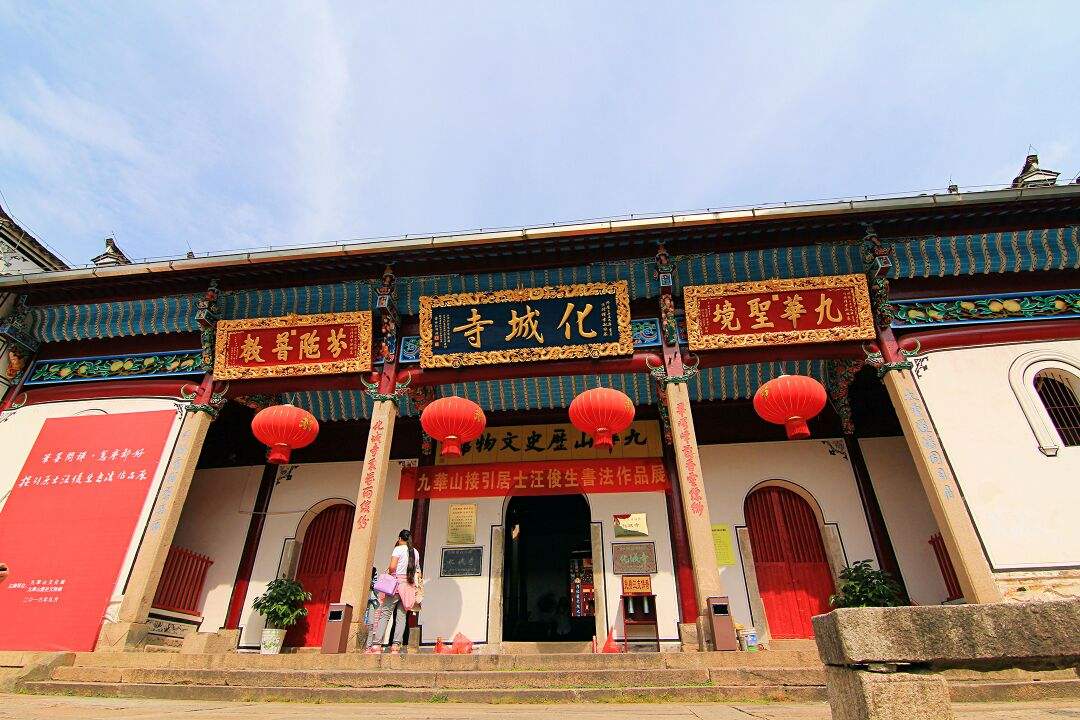
Huacheng Temple is the oldest and most prominent temple on Mount Jiuhua, with a time-honored history of more than 1,500 years. It is said that the temple was first built by the Indian monk Huaidu in the Jin Dynasty. During the Kaiyuan era of the Tang Dynasty, the temple was renamed “Huacheng” by the monk Tanhao. The name “Huacheng” comes from a Buddhist story in the Lotus Sutra. After Jin Qiaojue passed away at the age of 99 in 794, fellow monks regarded him as the incarnation of Ksitigarbha Bodhisattva. And since then, the Huacheng Temple was regarded as the place to hold rites for Kṣitigarbha Bodhisattva.
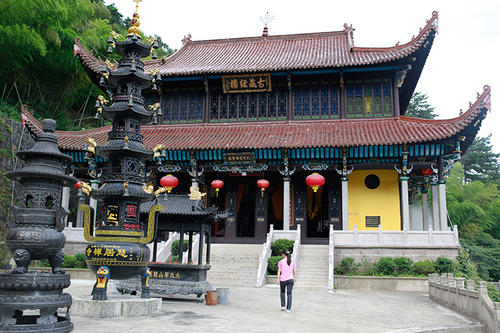
The Incarnation Grand Hall is the place where Jin Qiaojue spent his old age reading Buddhist scriptures. Three years after his death, his body still remained intact. The monks believed that he was the reincarnation of Kṣitigarbha Bodhisattva and they built a three-floor stone pagoda to bury the body of Jin Qiaojue. Later a temple was built on the foundation of the pagoda and was named The Incarnation Grand Hall.
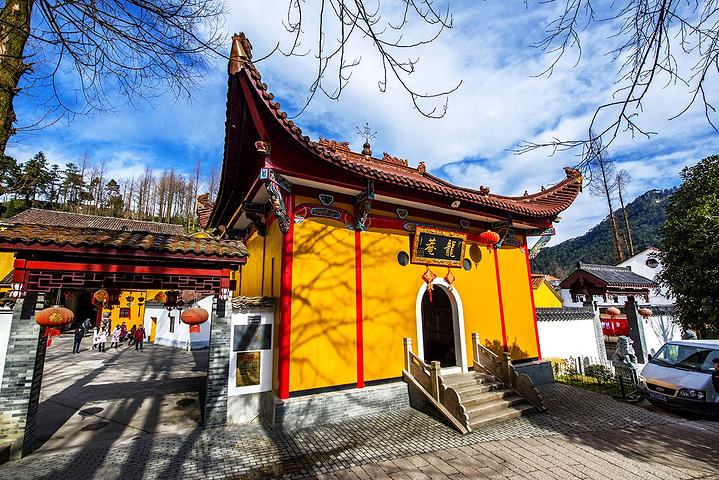
During the Wanli period of the Ming Dynasty, Master Wuxia went from Mount Wutai to Mount Jiuhua to cultivate himself. At the age of 110, he died in a cave, and three years after his death, his body still remained intact. Later, his body was decorated into a golden statue and was placed in the temple for worship. In 1630, the third year of the Chongzhen era of the Ming Dynasty, Wuxia was honored as “Yingshen Bodhisattva”. Based on the temple, the Longevity Palace was built to commemorate Master Wuxia.
Tiantai Temple, also known as the Temple of Kṣitigarbha, is the highest Buddhist temple at Mount Jiuhua. First built in the Tang Dynasty, it went through many changes and renovations. In 1983, the State Council announced Tiantai Temple as a national key Buddhist temple.
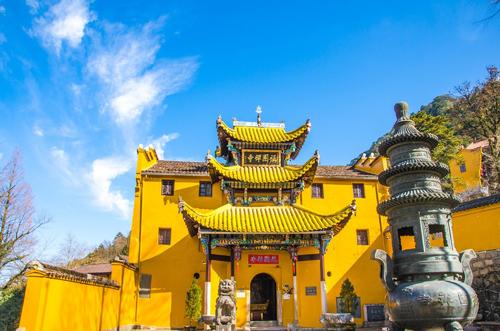
Zhiyuan Temple, built on a hill in the Ming Dynasty, is located at the entrance of Jiuhua Street. On October 28, 2014, Zhiyuan Temple was announced as a municipal cultural unit by the local government. Together with Sweet Dew Temple, Longevity Palace, and Dongya Temple, it is known as one of the four main temples at Mount Jiuhua. Consisting of hundreds of halls such as Mahavira Hall, Hall of Heavenly Kings, Buddhist Texts Library, and so on, the temple is exceptionally large in scale.
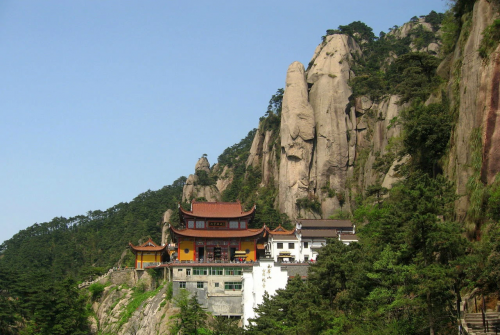
Sweet Dew Temple is located on the hillside of Huacheng Peak. Covering an area of 3,500 square meters, Sweet Dew Temple consists of three groups of residential buildings and a palatial building called Daxiong Hall. In the sixth year of Emperor Kangxi’s reign in the Qing Dynasty (1667 A.D.), when a prestigious master named Yulin made a pilgrimage to Mount Jiuhua, he said that the hillside of Huacheng Peak, which was surrounded by rivers and trees, was a perfect place for the building of a temple, and that once upon completion, the temple became home to noble monks.
It is said that the day before the construction of the temple, all the pine trees at the mountain were covered with dew, and therefore, then the temple received its name, Sweet Dew Temple.
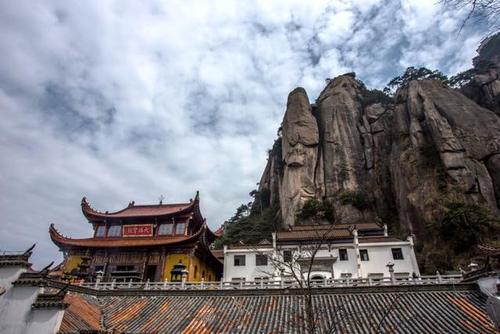
Guanyin Peak Temple, formerly known as Yuantong Temple, is a major temple in Anhui Province. Built in the Qing Dynasty, it is located on the west side of a giant rock, and has an altitude of 1,100 meters. The two-floor temple, which was constructed in a residential style, is characterized by its unique design and wonderful construction techniques.
There is an inscription on the wall in front of the temple, which tells the story of an old gentleman called Mr. Wu who repaired the temple, believing that he had received instruction from the Bodhisattva. The abbot of the temple named Shi Hongcheng, who became a monk at his early age, worked hard for more than ten years, saving several million yuan for the maintenance of the temple.
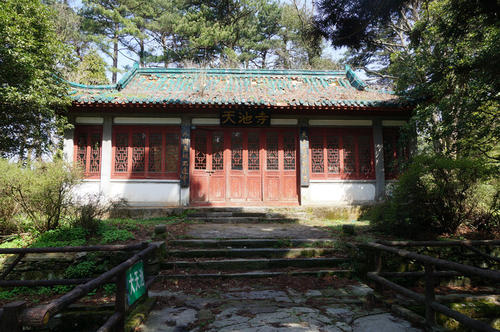
Located in the east of Huacheng Temple on Jiuhua Street, the western foot of the East Cliff, close to Taibai Hall, Tianchi Temple is a major temple in Anhui Province. During the reign of Emperor Kangxi of the Qing Dynasty, it served as one of the dormitories for monks. During the Tongzhi period, the abbot raised funds for the expansion of the temple.
There is a stone pond in the courtyard, above which there is a spring that comes from a stone crack, under which a square stone pond with a width of 1.5 meters and a depth of 1.4 meters was built. It looks like the water flowing from heaven, therefore, the temple was called Tianchi Temple, literally Heavenly Pond Temple.
The water of Tianchi is clear and sweet, and it is high-quality mineral water. It is said that the great poet Li Bai of the Tang Dynasty used water from Heavenly Pond to brew wine and often got drunk by the pond. There is a lotus pond covering an area of about 100 square meters in front of the Heavenly Pond Temple, where visitors can enjoy beautiful lotus flowers every summer.
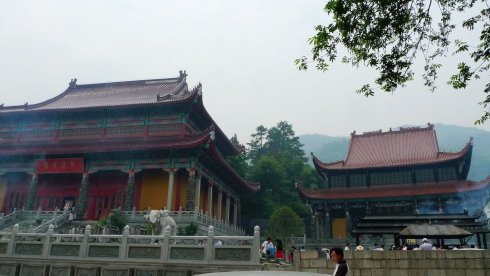
Huayan Cave Temple is a key temple in Anhui Province, formerly known as Huayan Haihui Temple, including Huayan Ancient Cave and Huayan Pilu Maopong Hall. The existing halls of Huayan Ancient Cave are the buildings of the Republic of China. These buildings are sitting in the south and facing north, with a construction area of 178 square meters. Inside are the statues of the Three Saints of Huayan and Buddha Vishnu, Manjushri and Samantabhadra.
The temple was built at the end of Emperor Guangxu period(1871-1908) of the Qing Dynasty. In 1918, the abbot was monk Guangfa. From 1923 to 1942, the abbot was monk Miao Yi. From 1949 to 1953, the abbot was nun Benxiu. From 1954 to 1987, the abbot was nun Changhua. From 1987 to 1989, the abbot was nun Yougen. From 1989 to the present, the abbot is nun Nengwan.
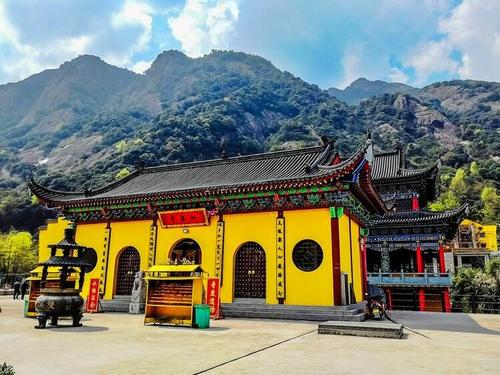
Nine Sons Temple, a key temple in Anhui Province, formerly known as Guanghua Temple, is located at Nine Sons Peak in the back of Mount Jiuhua. The temple has an area of about 200 square meters. It is said that the Nine Sons Temple was built in the Tang Dynasty and was rebuilt and renamed "Guanghua Temple" in the Ming Dynasty. In the fifteenth year of Emperor Guangxu (1889) in the Qing Dynasty, the abbot at that time, Wuheng, moved the temple to Nine Sons valley and named it " Nine Sons Temple ". From 1889 to 1935, the abbot was Wuheng; from 1957 to 1961 the abbot was Rende; from 1983 to 1989 the abbot was Haicheng; from 1990 the abbot was Daolin; from 1991 to 2008 the abbot was Haicheng; from 2008 to present the abbot is Miaozhuan.
The environment surrounding the temple is beautiful. Nine Sons Temple is located in a valley basin, surrounded by peaks and rocks, waterfalls and springs. In the back of the temple, there are nine peaks in different sizes, like nine babies nestled in the mother’s arms. This is why the Nine Sons Temple was so named. When you go inside the temple, you will learn more stories about this temple. There is a huge rock in the northeast corner of the temple, with a smooth surface of about 15 square meters. There are hip prints on the surface of the rock, which are said to be the traces left by Ksitigarbha when he sat in meditation here. So later people called this rock "Ksitigarbha meditation rock". Not far from the rock, there is a stone pagoda of the Song Dynasty, with 7 floors and 9 meters high in total. There is a stone Buddha in the pagoda and a small stone dog in front of the Buddha. The Buddha is Ksitigarbha, and the dog was brought from Silla(an ancient kingdom in the Korean peninsula) by Ksitigarbha. According to legend, this pagoda was built to commemorate this white dog which was also cultivated together with Ksitigarbha.
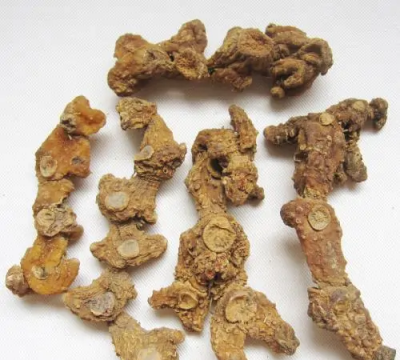
Jiuhua Buddha Tea, a kind of green tea produced at Mount Jiuhua and its surrounding areas, is made from high-quality fresh leaves from local tea trees and processed with specific techniques. It is also known as Jiuhua Mao Feng Tea and Huangshixi Mao Feng Tea.
Polygonatum is the rhizome of a perennial herb abundant at Mount Jiuhua in Qingyang County, which is rich in protein, starch, amino acids, and various micronutrients that are necessary for the human body. You can put one or two pieces when you make porridge or soup.
Jiuhua Tea pillow is a kind of health-preserving pillow and it is an embodiment of the combination of traditional Chinese medicine(green tea is one kind of herb) and modern technology. The pillow is made of Jiuhua Buddha tea leaves which are picked in the late spring in Mount Jiuhua.
In ancient times, many great poets came to Mount Jiuhua and composed many poems that have been passed down through the ages.
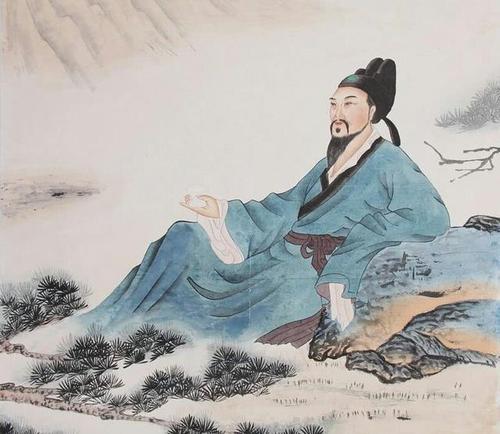
Li Bai (701 A.D. - 762 A.D.), also known as Taibai, was a great poet of the Tang Dynasty. He was called “Immortal Poet”, and wrote a large number of poems eulogizing the magnificent mountains and rivers of his motherland. At the invitation of his friends, Li Bai came to Mount Jiuhua in the thirteenth year of Emperor Xuanzong(754 A.D.) of the Tang Dynasty (618-907). In Jiuhua Street, there is a Taibai Hall, where Li Bai once lived. The Taibai Hall we see now was rebuilt on the old site. In the backyard of the hall, there is a well called "Taibai Well", the water of which is sweet and clear and is said to be used by Li Bai for his life. Next to the well are two tall ginkgo trees, which are said to be planted by Li Bai.
Du Mu (803 A.D. - 852 A.D.) was a poet of the Tang Dynasty. He was an official at that time. During the period of Du Mu’s tenure as the governor of Chizhou Prefecture, he often went to Mount Jiuhua, and he created several poems that were related to Mount Jiuhua.
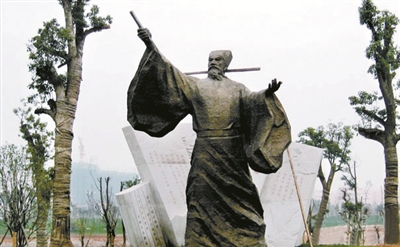
Wang Anshi (1021 A.D. - 1086 A.D.) was a politician, poet, and prose writer in the Northern Song Dynasty (960 A.D. -1127 A.D.). In the third year of Emperor Jiayou's reign (1058), Wang advocated major and controversial socioeconomic reforms known as the New Policies. After the failure of these reforms, he retired and settled down in Jiangning (present-day Nanjing). He visited Mount Jiuhua and wrote several poems to describe the tranquil and secluded environment of the ancient temples in Mount Jiuhua, and to express his gratitude for the hospitality of the monks.
Mount Jiuhua is famous for enshrining the physical body of Ksitigarbha, a Bodhisattva of the Chinese Mahayana Buddhist. Ksitigarbha, whose name was Jin Qiaojue before he became a Buddha, is commonly known as "Jin Ksitigarbha ". Jin Qiaojue was a member of the Jin family, the king’s family of the ancient Silla Kingdom (now the southeastern part of the Korean Peninsula).
At the age of 24, Jin Qiaojue became a monk. He came to China to study Buddhism during the reign of Emperor Xuanzong of the Tang Dynasty. When he passed through Mount Jiuhua, he found the place to be peaceful, so he would like to choose a cave in a deep and deserted area of the mountain to live and practice.
At that time, Mount Jiuhua was the place that belonged to a Buddhist layman, Min Ranghe. Jin Qiaojue asked him for a place with the same size as his cassock. Jin Qiaojue was surprised to find that his cassock covered all nine peaks of Mount Jiuhua after he had spread it. Min was amazed and delighted, because he realized that Jin Qiaojue might be a bodhisattva. Min first asked his son to worship him as a master. Later Min became a disciple of Jin Qiaojue, too. To this day, the attendants around the holy statue of Jin Qiaojue, who is Ksitigarbha, are Min Ranghe and his son.
In 757, the followers of Jin Qiaojue built a temple for him. Since then, his followers have grown so much that even Korean monks have been coming to China to follow him. In 794, when Jin Qiaojue was 99 years old, one day he suddenly summoned all his followers. He calmly staggered down and told everyone that he was dying. After his death, his body was placed in the temple. After three years, the body was still "as alive in color and flexible in joints". The Buddhists believe that he is a bodhisattva, so they built a stone pagoda to store the body. Since then, Jin Qiaojue has been in respect for Ksitigarbha. After that, the fame of Mount Jiuhua spread far and wide later.
Legend has it that one summer when Jin Qiaojue was on his way back to Dongyan from Tiantai(where he lived on Mount Jiuhua), he suddenly felt thirsty and weak. But where could he find water to drink in the scorching sun? He had no choice but to sit cross-legged on the ground under a big tree. In a trance, Jin Qiaojue looked up and saw a young girl with a jar of water on her head. Then she sent water to him. Only after Jin Qiaojue drank the water, he looked seriously at the girl and thought, what a stunning woman. With eyes shaped like almonds, slender and curved double eyebrows, cherry-like mouth, white teeth, this girl is a typical Chinese beauty. Qiaojue couldn't help but have his heart beat faster. Jin Qiaojue, who is known as the reincarnation of the Bodhisattva, is worthy of the name. As soon as the heart was moved, he hastily joined his palms. His heartbeat became normal after reciting an "Amitabha Buddha". When he looked up again, the beauty has gone away, but where she stood immediately appeared a pool of water. It turns out that the girl is a fairy, who was sent down by the god to send water to Jin Qiaojue.
Perhaps the god discovered that Jin Qiaojue being moved, when he returned to the residence, suddenly came out five small dragons bite him fiercely. He thought this is a punishment from god. From then on he took self-cultivation more seriously and was never again moved by mundane things, eventually becoming a bodhisattva.
Wei Tuo is the Guardian God of Buddhism. After Mount Jiuhua was established as the dojo of Ksitigarbha, Wei Tuo became the protector of Mount Jiuhua. One day, Wei Tuo went out to patrol the mountain. A group of people came to the Incarnation Grand Hall, and there was a scholar among them. The monks here thought he came for a pilgrimage. But he neither burned incense, nor kowtowed, and went straight to the incarnation pagoda, where the incarnation of Ksitigarbha was located. After arriving at the front of the incarnation pagoda, the scholar took out the prepared steel needle and stabbed it into the right leg of the Ksitigarbha to test its authenticity. Unexpectedly, the steel needle was sucked in tightly, and the scholar made all his strength to pull out the steel needle. The needle holes left in the right leg of Ksitigarbha sprang up with crimson blood. The scholar was terrified, and then descend the mountain in a panic.
No sooner had they left than the We Tuo returned, and seeing that Ksitigarbha's right leg was bleeding, he was deeply distressed by his own dereliction of duty. When he found out who did this, he was furious and insisted on executing the scholar. The Ksitigarbha was compassionate and only allowed Wei Tuo to chase after him for five miles and gave him a warning. We Tuo took orders and chased after the scholar, deliberately interpreting "five miles" as "five streams" (a name of one place). He chased the scholar to the bridge of Five Streams and saw him. Wei Tuo killed him. After returning to the mountain, Wei Tuo told Ksitigarbha that the scholar had been killed. Ksitigarbha was so angry with him for not listening to his advice and committing the mistake of killing that he expelled him from Mount Jiuhua and asked someone else to protect the mountain.
According to legend, during the reign of Emperor Wanli in the Ming Dynasty, there lived a young farmer named Ning Cheng at the bottom of Mount Jiuhua. His father had died when he was young. He lived with his blind old mother, with no siblings. Life was very hard, but he was always very filial to his mother.
One day in the summer, the sun was scorching hot. Ning Cheng was weeding in the field, and he was extremely thirsty. An old man with white hair passed by and gave him half a peach, and Ning Cheng was very grateful to the old man. He saw that the old man was too old to walk steadily, so he offered to take him home. When he came to a rock wall, the old man knocked on the wall with his hand. The wall opened like a door and a cave came into view. The cave was filled with a large number of dazzling gold and silver treasures. The old man persuaded Ning Cheng to stay and help him grow peaches, and these treasures will be the reward. Ning Cheng thought of his blind old mother and politely refused. The old man was moved by Ning Cheng's filial piety and drove the wind to send him to his mother. It was then that Ning Cheng realized that this old man was an immortal. Ning was about to bow down when he looked up and saw that the old man was already standing on the clouds. Before left, the old man said to Ning Cheng, "My name is Weng Qiyun, when you finish paying your filial piety to your mother, I will come back to take you to the immortal world."
The legend of Ningcheng, "Better to be a filial son than an immortal", shows Chinese praise for the spirit of filial piety to parents and hard work for a good life.
Mount Jiuhua is a famous Buddhist mountain, and visitors from all over the world are welcomed to pay tribute to the Buddha all year round, among which the first and fifteenth days of each month of the lunar calendar are considered as good days by Chinese people to worship the Buddha. If you are also a Buddhist, then the first and fifteenth days of each month of the lunar calendar are the best time to visit Mount Jiuhua.
The fifth day of the first lunar month is the day to welcome the Chinese God of Wealth. Guanyin (Chinese translation of Avalokiteśvara Bodhisattva) ceremonies are held on February 19, June 19, and September 19. The thirtieth day of the seventh lunar month is the annual traditional temple fair at Mount Jiuhua. The eighth day of the lunar calendar is Becoming Buddha Day, and all temples at Mount Jiuhua provide free eight-treasure porridge early in the morning on this day. If you are interested in the Buddhist activities here, these are the best time for you to visit Mount Jiuhua.
Being situated in the subtropics, Mount Jiuhua enjoys a wonderful climate with clear seasonal divisions. In spring, you can enjoy the beautiful rhododendrons and the new greenery over the mountain. In summer, with a temperature of lower than 26 degrees Celsius at night, Mount Jiuhua is a nice summer resort. The autumn brings a clear blue sky and warm sunshine, and the mountain is dotted with leaves in yellow and red. The average daily temperature of Jiuhua Mountain in winter is between 7-14 degrees Celsius, and it will be very cold if it is windy. From the perspective of the climate, the best time will be from March to November.
From the perspective of cost, it is more advisable to travel to Mount Jiuhua during the low season, which is from November 15 to January 15. The ticket costs 140 yuan, which is 20 yuan cheaper than that in the peak season.
Bring your coat with you even if you came here in summer. The temperature on the mountain top is always lower than in the city area.
The roads to ascend at Mount Jiuhua are all stone roads, which could be quite slippery. Tourists should not underestimate the difficulty of climbing mountains on foot, and it is advisable to take a cable car. Pay special attention when taking pictures. Keep your eyes on the road and do not stare at the camera all the time. Make a plan in advance so that you will not go to remote places when it is getting dark or get lost.
Smoking is not allowed here. You can smoke in the designated smoking spot. Be careful not to litter or paint anywhere. Do not burn anything or set off fireworks.
Do not approach or feed wild monkeys on the mountain. Do not wear red clothes or pants. Do not walk alone or show your food to monkeys. Once you are besieged by monkeys, give up your baggage, and then call the police immediately.
Mount Jiuhua is a holy place of Buddhism, and the local people respectfully called the monks “masters” (Chinese: 大师, dàshī)there.
In the temples, do not step on the threshold, stand, or sit on it. Do not stay in the doorway for too long when entering or leaving the temple. Do not take photos or videos inside the temple. Do not speak loudly or shout in the temple. Do not ask the monks about their reasons for becoming monks, their daily lives, or other privacy issues. Do not touch the Buddhist objects (bells, drums, wooden fish, etc.) inside the temple.
Huacheng Temple → The Incarnation Grand Hall → Longevity Palace → Hall with 500 Arhat Statues → Tonghui Temple → Great Compassion Grand Hall
Being situated in the subtropics, Mount Jiuhua is worth visiting all year round by virtue of the clear seasonal divisions. The best time to visit Mount Jiuhua is from March to October.
a. From Chizhou Railway Station to Mount Jiuhua Scenic Area
On the left side of Chizhou Railway Station stands Chizhou Tourism Bus Station, where one could take a direct bus to Mount Jiuhua Scenic Area. It takes about 40 minutes and the fare is 12 yuan.
| Route | Departure Time | Fare |
| Chizhou Tourism Bus Station → Mount Jiuhua Scenic Area |
7:00, 8:00, 09:00, 10:00, 11:00, 12:00, 13:00, 14:00, 15:00, 16:00, 16:50 | 12 yuan |
b. From Chizhou Mount Jiuhua Airport to Mount Jiuhua Scenic Area
There are also regular buses from Chizhou Mount Jiuhua Airport to Mount Jiuhua Scenic Area. The fare is 20 yuan and it takes about 50 minutes.
Chinese: 请带我去九华山景区。English: Please take me to Mount Jiuhua Scenic Area.
If you go to the Mount Jiuhua by taxi, it takes about 40 minutes from Chizhou Railway Station. (Around 90 yuan)
If you go to the Mount Jiuhua by taxi, it takes about 40 minutes from Chizhou Mount Jiuhua Airport. (Around 90 yuan)
